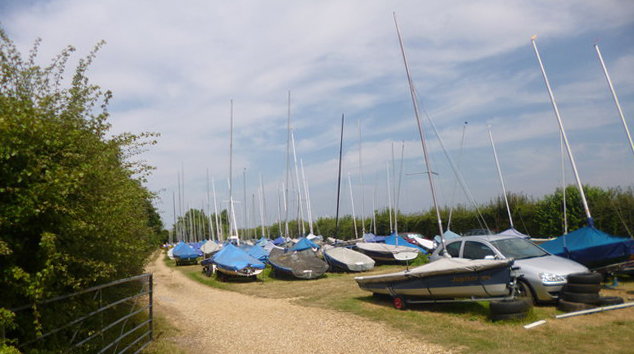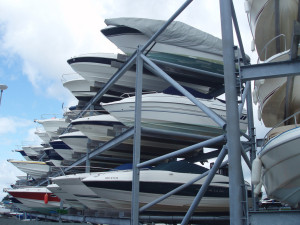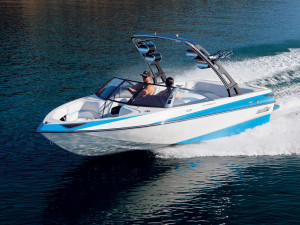Winterizing Your Boat for Smooth Sailing Come Spring

If you own a boat you probably already know that you need to winterize it for the winter. If you’re a new boat owner, this is a necessary step before storing any type of watercraft. Not only will winterizing your boat ensure good performance when you’re ready to set sail again, but it can also prevent some very expensive repairs.
It’s always wise to remember that insurance will not cover damages as a result of poor maintenance, and that’s exactly what will happen if you don’t winterize your boat. Although insurance won’t cover maintenance issues, it’s a good idea to have your boat properly insured in case of vandalism or theft. For more about boat insurance, click here.
Always, it’s best to find your expensive recreational vehicle a climate-controlled boat storage facility. Ideally, you do not want to leave your boat docked on water come winter, but you may find that you have no other affordable option.
Keep in mind that when it comes to storage, partial coverage is better than no coverage. Shrink-wrapping the boat is an excellent but costly way to protect it. It’s a good idea to also protect your boat with a tarp or some other type of resilient cover.
Before storing your boat for winter, you’ll want to take care of all its systems and clean the interior thoroughly. Remove all valuables, fire extinguishers, etc. Consider installing a dehumidifier or a moisture absorbing product to keep the air dry and your boat free of mold and mildew.
The motor is a vital part of your vehicle which needs winterizing. You should always consult your owner’s manual for the manufacturer’s recommendations. If you feel uncertain about how to winterize your boat, it may be wise to have a professional do it. The following are general instructions on DIY winterizing but should not take precedence over manufacturers’ instructions. If you have jet skis, you may want to winterize both at the same time. For instructions on winterizing your jet ski, click here.
Engine(s)
- Change the oil while it’s warm. Let it run for a few minutes if it’s been sitting.
- Change the oil filter
- Refill the oil, check the level and check it later to make sure there are no leaks.
- Flush the engine with antifreeze by connecting an intake hose to the water pump (run until you see antifreeze).
- Change the fluid in your transmission.
- Fill water strainers with antifreeze.
- Remove spark plugs and fog each cylinder.

- Treat remaining fuel in tank with fuel stabilizer.
- Turn off fuel supply and fog while the engine is running.
- Flush engine with muffs and clean water.
- Grease the propeller shaft and threads.
- Change the gear oil in the lower unit.
- Wash and dry the engine.
- Lubricate the engine or polish with wax.
Stern Drive(s)
- Remove all junk (leaves, barnacles, etc.) from the lower unit.
- Drain the gear case and inspect it for leaks (is the oil moist?). If you have a leak, you will need to repair the seals before spring.
- Clean the lower unit.
- Check the stern drive’s rubber boot (if it has one) for cracks or pinholes.
- Grease the fittings.
- Check fluid levels.
Fuel
- Add stabilizer to the fuel, only according to your owner’s manual.
- Change fuel filters and water separators.
Bilges
- Make sure the bilge pump is wired to the batteries with a fuse.
- Clean oil spills and debris.
- Add just a dash of antifreeze.
Fresh Water System
- Drain the fresh water tank and hot water heater.
- Disconnect the in and out lines and connect them together.
- Run antifreeze through raw-water cooling system. Pump the (preferably) non-toxic antifreeze into the system and the water heater. Turn on all the faucets, including in the shower, until you see the antifreeze.
Other Systems
- Flush and fill air conditioner system with antifreeze
- Run non-toxic antifreeze through the watermaker (see owner’s manual for the right steps).
Head
- Pump out the holding tank, add fresh water, making sure to flush several times.
- Add antifreeze (check your manual to see which kind works for your vehicle) and pump through entire system.
Dry Storage
- Cold air can damage a boat, so those stored on land must be winterized sooner rather than later.
- Make sure your boat has enough support so the hull doesn’t get distorted over time, which causes many problems including poor engine alignment. There are cradles, jack stands, lifts and dry-storage racks created for the purpose of giving a boat adequate support during winter storage.
- Wash the hull, struts, props, shafts, trim tabs, thru-hulls, rudders, strainers.
- Drain water by opening seacocks.
- Inspect the hull for necessary repairs (blisters) that need to be made.
- Wax the hull
- Charge all batteries and turn the switches off.
In-Water Storage
- Close seacocks and check rudder shafts and stuffing boxes for leaks.
- Remove hose and drain all water, which can freeze and crack the body.
- Reinstall hose
- Charge all batteries, clean the terminals, add water (if you need to), and check to see if your charging system works.
- Make sure bilge pumps work and float switches are activating the pumps and are free of debris.
- Plug exhaust ports (unplug in the spring).
- Suspend water agitators below so warm water rises to the surface and your boat doesn’t get iced in.
- Regularly check on your boat for leaks and to make sure it’s not sinking. This often happens because a fitting may fail.
- Check for blisters on the hull, as this often happens when a boat is stored in the water during cold and freezing temperatures.
The information in this article was obtained from various sources. This content is offered for educational purposes only and does not represent contractual agreements, nor is it intended to replace manuals or instructions provided by the manufacturer or the advice of a qualified professional. The definitions, terms and coverage in a given policy may be different than those suggested here and such policy will be governed by the language contained therein. No warranty or appropriateness for a specific purpose is expressed or implied.
